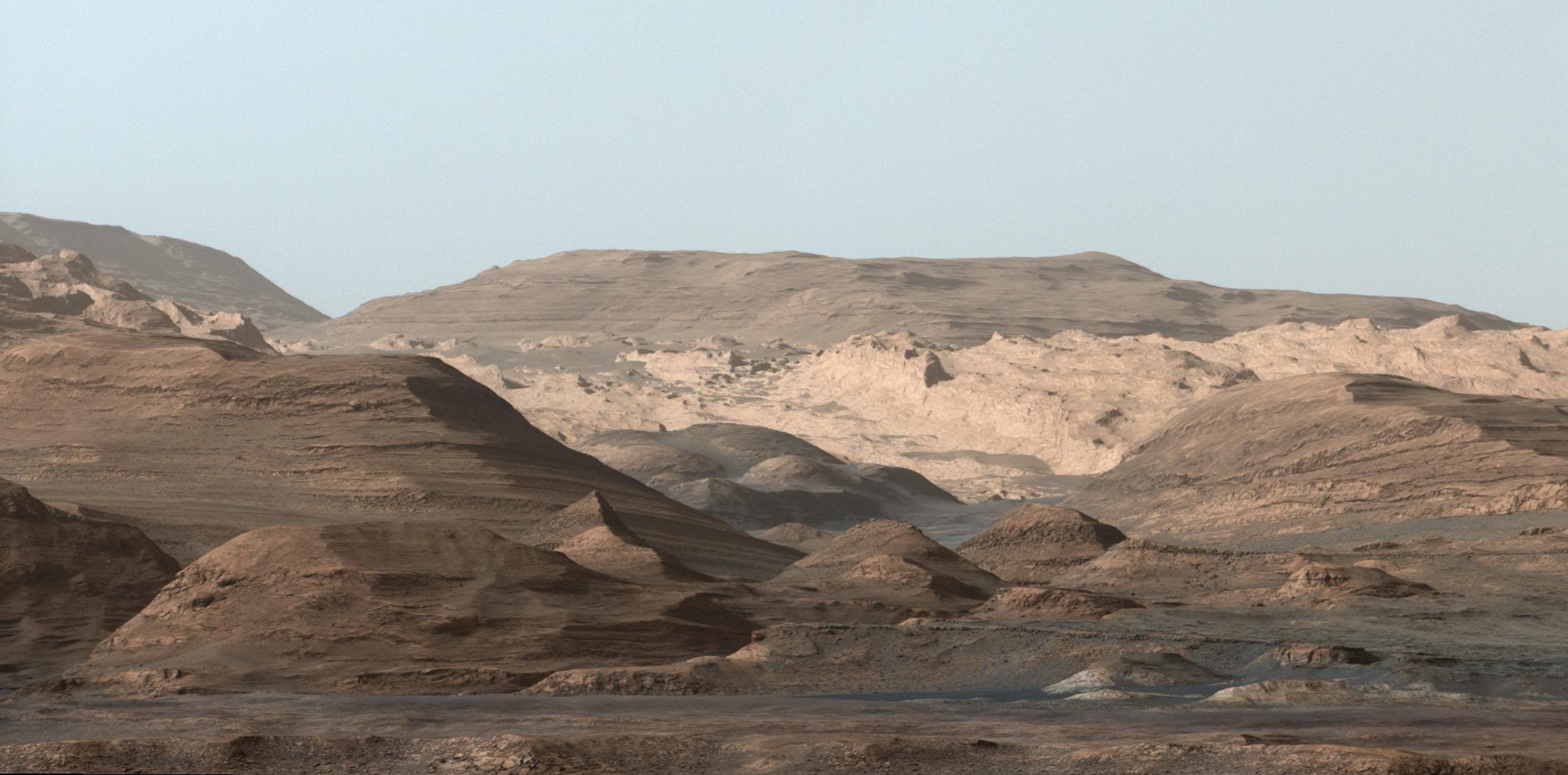
NASA's Mars rover Curiosity has beamed home a gorgeous postcard of the mountainous Red Planet landscape it's exploring.
The car-size Curiosity rover has been studying the foothills of the 3.4-mile-high (5.5 kilometers) Mount Sharp since September 2014. Slowly but surely, the robot is making its way up the mountain, and the new photo — which was taken on Sept. 9 but just released Friday (Oct. 2) — shows some of the terrain Curiosity will investigate in the future.
"The only thing more stunning than these images is the thought that Curiosity will be driving through those lower hills one day," Curiosity project scientist Ashwin Vasavada, of NASA's Jet Propulsion Laboratory in Pasadena, California, said in a statement Friday (Oct. 2). "We couldn't help but send a postcard back to all those following her journey." [Latest Amazing Mars Photos by NASA's Curiosity Rover]
In the foreground of the new image, about 2 miles (3.2 km) from Curiosity's position, lies a ridge rich in hematite, a mineral form of iron oxide. Beyond the ridge lie ancient hills containing clay minerals, and behind those hills are buttes rich in sulfate minerals, NASA officials said.
"The changing mineralogy in these layers of Mount Sharp suggests a changing environment in early Mars, though all involve exposure to water billions of years ago," NASA officials wrote in the same statement. "The Curiosity team hopes to be able to explore these diverse areas in the months and years ahead."
The light-colored, heavily wind-eroded cliffs in the background of the new photo likely formed more recently, when Mars was drier, researchers said.
Curiosity is currently — and was on Sept. 9 as well — in a sandstone-dominated part of Mount Sharp's lower reaches that mission team members call the Stimson Unit. On Sept. 29, the six-wheeled robot drilled a 2.6-inch-deep (6.5 centimeters) hole in a rock dubbed Big Sky, then collected some of the resulting powder for analysis.
Get the Space.com Newsletter
Breaking space news, the latest updates on rocket launches, skywatching events and more!
That analysis — using the rover's onboard Chemistry and Mineralogy (CheMin) and Sample Analysis at Mars (SAM) instruments — will take place over the next week or so, team members said.
"With Big Sky, we found the ordinary sandstone rock we were looking for," Vasavada said. "It also happens to be relatively near sandstone that looks as though it has been altered by fluids — likely groundwater with other dissolved chemicals. We are hoping to drill that rock next, compare the results, and understand what changes have taken place."
Curiosity has now drilled eight such sample-collecting holes on Mars. Five of these drilling operations have occurred at the base of Mount Sharp.
Curiosity landed inside Mars' 96-mile-wide (154 km) Gale Crater in August 2012, on a $2.5 billion mission to determine if the Red Planet has ever been capable of supporting microbial life. Curiosity's observations near its landing site revealed that Gale Crater harbored a potentially habitable lake-and-stream system billions of years ago.
Mount Sharp has been the rover's ultimate science destination since before its November 2011 launch. Mission scientists want Curiosity to climb up through the mountain's lower reaches, reading the rocks for clues about Mars' transition from a relatively warm and wet world long ago to the cold, dry planet we know today.
Follow Mike Wall on Twitter @michaeldwall and Google+. Follow us @Spacedotcom, Facebook or Google+. Originally published on Space.com.
Join our Space Forums to keep talking space on the latest missions, night sky and more! And if you have a news tip, correction or comment, let us know at: community@space.com.

Michael Wall is a Senior Space Writer with Space.com and joined the team in 2010. He primarily covers exoplanets, spaceflight and military space, but has been known to dabble in the space art beat. His book about the search for alien life, "Out There," was published on Nov. 13, 2018. Before becoming a science writer, Michael worked as a herpetologist and wildlife biologist. He has a Ph.D. in evolutionary biology from the University of Sydney, Australia, a bachelor's degree from the University of Arizona, and a graduate certificate in science writing from the University of California, Santa Cruz. To find out what his latest project is, you can follow Michael on Twitter.









